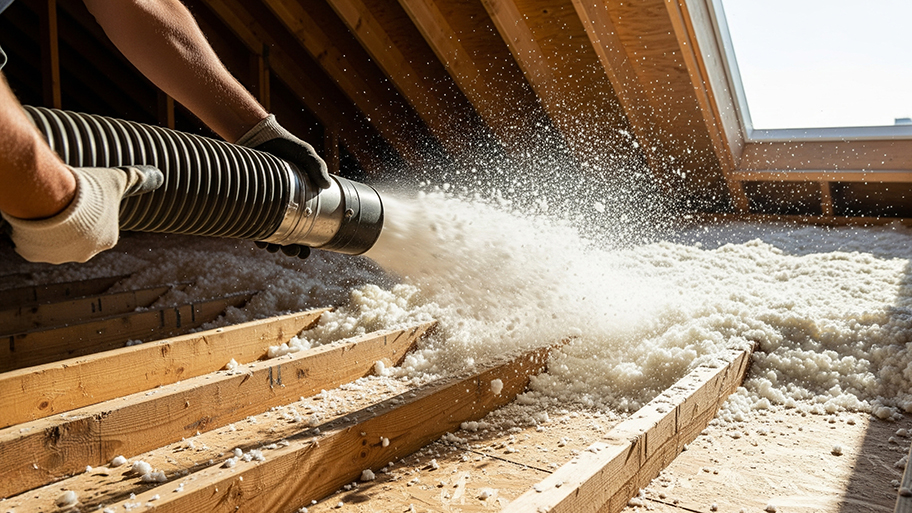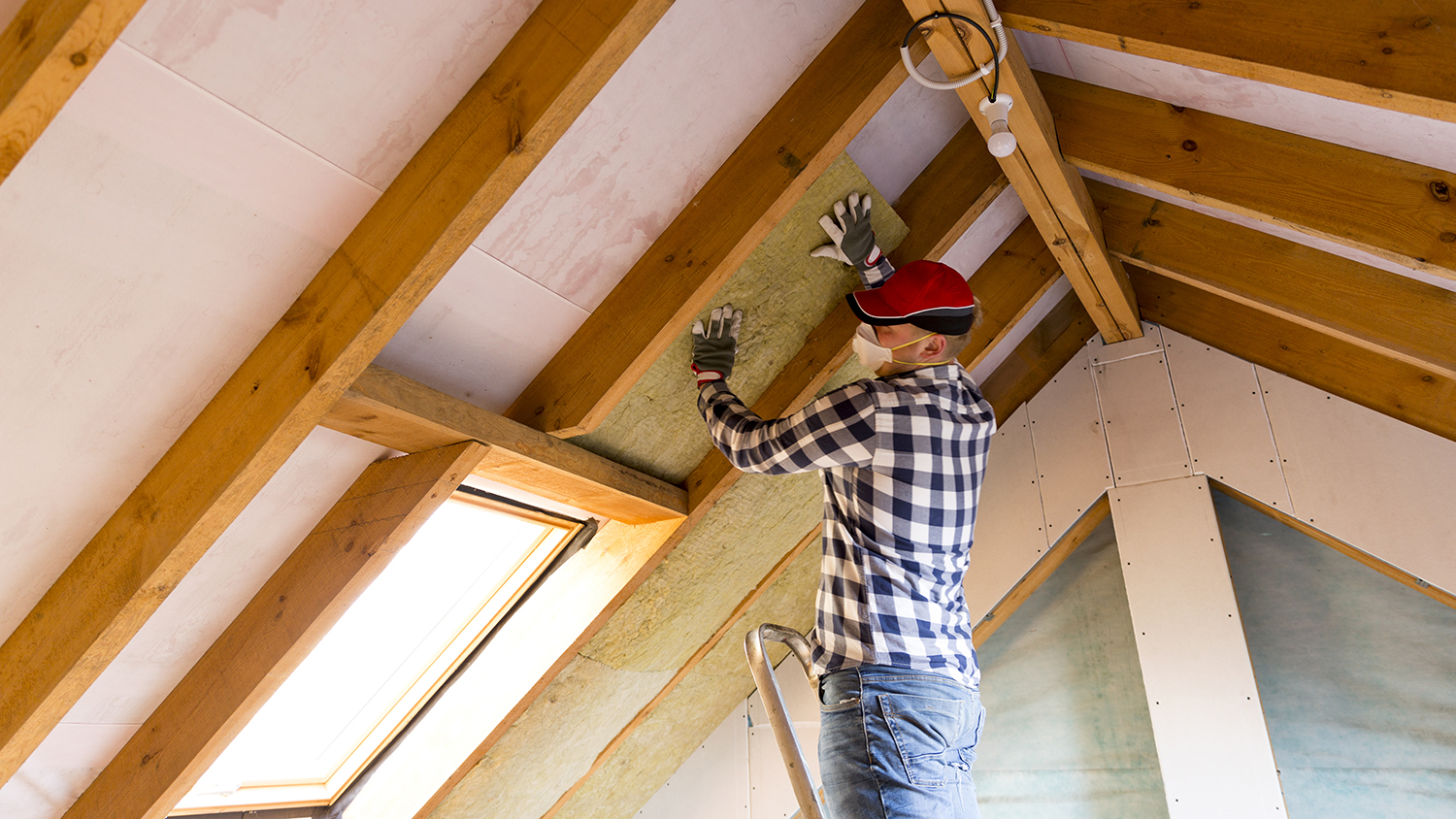
The cost of blown-in insulation costs varies depending on the type of insulation, labor, prep work, and more. Learn more about the cost factors in this guide.
Reflect on this cool home insulation feature


Radiant barriers are made of reflective materials like aluminum that redirect sunlight.
They can reduce cooling needs by 6% to 16% but don’t offer heat retention.
Radiant barriers are best for homes in hot climates.
They cost $1,700 on average and last 80 to 100 years.
If you’re deep into researching insulation types for attics or elsewhere, odds are you’ve come across radiant barriers. While a radiant barrier isn’t enough to insulate your home all on its own, it can offer some extra protection from hot days. That’s why radiant barriers are so popular in particularly hot climates, like the southern United States.
But how does a radiant barrier work, and is it right for your abode? Understanding the mechanism behind these energy-saving solutions will help you make an informed choice.
A radiant barrier is an additional insulation measure, often paired with another, more intensive solution, that limits how much heat is absorbed into your home. It’s available in two types—foil and spray-on—both of which work to keep your domain cool despite high exterior temperatures. While it can be a good choice for those across the country, residents of especially hot climates will experience the biggest benefits.

Anyone who’s ever stood in the sun on a hot summer day knows just how quickly things can heat up, and that rule applies to houses, too. Radiant heat, or a type of heat that travels in a straight line and is absorbed by solid entities, is the reason for this. Without any protective measures in place, it will continuously be absorbed into a home the longer it goes unmitigated.
Radiant barriers offer some relief from this phenomenon because they’re composed of reflective materials, applied on top of traditional insulation, and installed just underneath roof panels in order to redirect sunlight and its punishing heat.
There are a few problems with radiant barriers to keep in mind—namely, that they become less effective when dusty and won’t work at all if they aren’t installed properly. If they aren’t placed facing an open airspace, you might as well forget about installing them in the first place.
Fortunately, there are ways to minimize dust build-up, like installing radiant barriers aluminum-side down (though you can always opt for a double-faced option for extra protection). Radiant barrier installation is fairly straightforward, especially if you hire an attic insulation pro near you.
According to Angi data, 11% of homeowners who install blown-in insulation also opt to install energy-saving radiant barrier protection. Other common add-on services include removing old insulation, installing sound proofing, and insulating hot water pipes.
Radiant barriers are a worthwhile purchase for those living in places where the sun shines year-round because of their cooling properties. Experts estimate they can reduce cooling loads by anywhere from 6% to 16% during hot seasons.
However, if your local climate experiences a lot of cold and snow, spending extra on radiant barriers is unlikely to recoup the same amount in energy costs. Plus, there are still ways to regulate heat absorption that may make more sense depending on where you live—like installing additional thermal regulation, which will also be effective when it is cold.
From average costs to expert advice, get all the answers you need to get your job done.

The cost of blown-in insulation costs varies depending on the type of insulation, labor, prep work, and more. Learn more about the cost factors in this guide.

Discover roof insulation costs, including average prices, key cost factors, and expert tips to help you budget and save on your next project.

How much does a radiant barrier cost? Our guide breaks down prices by type of barrier and size of your attic space.

Learning how to install insulation requires technique, patience, and safety training. Read our guide to see if it’s a DIY project you should take on yourself.

Removing old insulation may be necessary for upgrading your insulation. Keep reading to see if you should remove old insulation before adding new insulation.

Are you wondering how to install foam board insulation? This step-by-step guide can help you decide whether you can tackle the project yourself or if you're better off calling a pro.